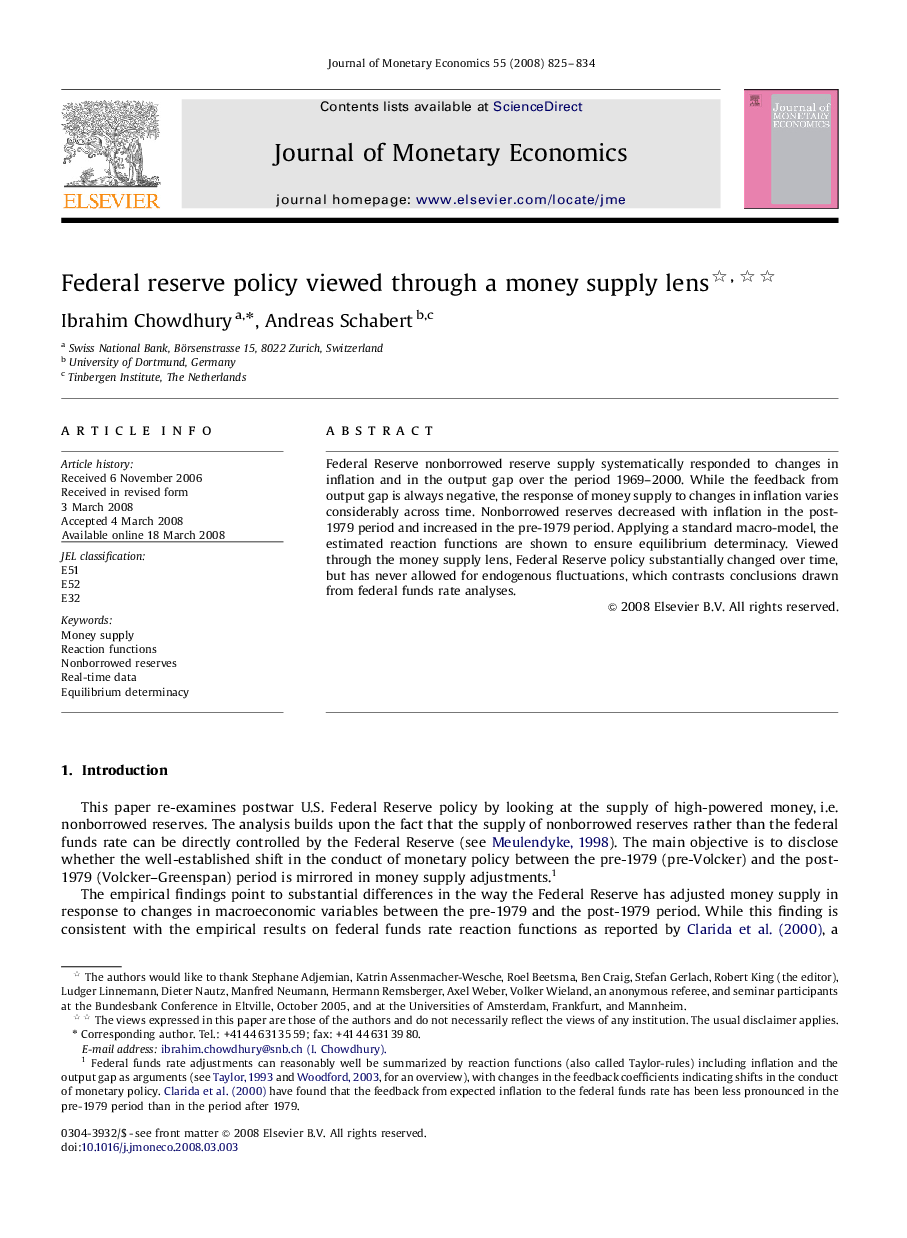| Article ID | Journal | Published Year | Pages | File Type |
|---|---|---|---|---|
| 967218 | Journal of Monetary Economics | 2008 | 10 Pages |
Abstract
Federal Reserve nonborrowed reserve supply systematically responded to changes in inflation and in the output gap over the period 1969-2000. While the feedback from output gap is always negative, the response of money supply to changes in inflation varies considerably across time. Nonborrowed reserves decreased with inflation in the post-1979 period and increased in the pre-1979 period. Applying a standard macro-model, the estimated reaction functions are shown to ensure equilibrium determinacy. Viewed through the money supply lens, Federal Reserve policy substantially changed over time, but has never allowed for endogenous fluctuations, which contrasts conclusions drawn from federal funds rate analyses.
Related Topics
Social Sciences and Humanities
Economics, Econometrics and Finance
Economics and Econometrics
Authors
Ibrahim Chowdhury, Andreas Schabert,
